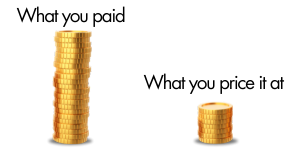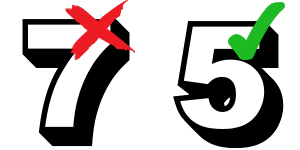Setting the right price for your garage sale items can make the difference between a successful sale and boxes of unsold items heading back into storage. Let's dive into proven pricing strategies that will help you move inventory while maximizing your profits. 
Start with the One-Third Rule
Consider Your Market
Price Points That Sell
Bundle Pricing Strategies
Timing-Based Pricing
High-Value Items Need Special Consideration
The Power of Free
Price Presentation Matters
Negotiation Strategy
Start with the One-Third Rule
The most reliable starting point for garage sale pricing is the one-third rule: price used items at roughly one-third of their original retail value. For example, if you paid $60 for that coffee maker, consider pricing it around $20. This baseline gives shoppers the substantial discount they expect at garage sales while still providing reasonable value for quality items.
However, certain factors can adjust this baseline up or down. Items still in their original packaging or with tags attached can command up to 50% of retail value. Conversely, items showing significant wear might need to be priced at 10-15% of their original cost.
Consider Your Market
Your neighborhood's demographics play a crucial role in pricing. Affluent areas may support higher prices, while working-class neighborhoods typically expect deeper discounts. Research other local garage sales to understand your market's expectations. Social media marketplace listings in your area can also provide valuable pricing insights.
Price Points That Sell
Certain price points psychologically appeal to garage sale shoppers. Items priced at $1, $5, $10, and $20 tend to move quickly. Instead of pricing something at $7, consider whether $5 might generate a faster sale. While you might make slightly less per item, the increased sales volume often compensates for the lower price point.
Bundle Pricing Strategies
Creating smart bundles can help move inventory faster. Group similar items together – like kitchen utensils, children's books, or garden tools – and price them slightly lower than if sold separately. For example, instead of pricing five books at $2 each, offer the bundle for $8. Shoppers appreciate the perceived value, and you clear more inventory.
Timing-Based Pricing
Consider implementing a pricing schedule throughout your sale. Many successful sellers reduce prices by 50% in the final hours. This strategy creates urgency early (when prices are full) and ensures maximum inventory clearance at the end. Clearly communicate your pricing schedule with visible signage to drive sales at both ends of your event.
High-Value Items Need Special Consideration
For items worth over $100, research comparable prices online before setting your price. Popular selling platforms like eBay (checking completed sales) and Facebook Marketplace can guide you toward realistic prices. High-value items often benefit from advance advertising on local buy/sell platforms, potentially attracting serious buyers to your sale.
The Power of Free
Strategically offering some items for free can actually boost overall sales. Place a "Free" box near your entrance – this creates goodwill and often leads to paid purchases. Choose items you'd likely donate anyway, and use them to draw shoppers in.
Price Presentation Matters
Clear, visible pricing is crucial. Use large, easy-to-read tags or signs. Consider color-coding price tags by value range to help shoppers quickly identify items in their budget. Group similarly priced items together when possible, creating intuitive shopping zones.
Negotiation Strategy
Build small negotiation margins into your initial prices. If you absolutely want $15 for an item, price it at $18-20. This gives bargain hunters the satisfaction of negotiating while still hitting your target price. Be prepared to negotiate more deeply on big-ticket items – serious buyers expect it.
Remember that a successful garage sale prioritizes inventory clearance over maximum profit on each item. While it's tempting to price items based on emotional value or original cost, your primary goal is to sell. Items priced too high often end up unsold, creating more work in cleanup and storage.
Monitor what sells and what doesn't during your sale. If certain items aren't generating interest, consider adjusting prices mid-sale. The best pricing strategy is flexible and responds to buyer behavior in real-time.
By following these pricing guidelines while remaining adaptable to your specific situation, you'll create the perfect balance between attractive prices and satisfactory profits. Remember, a sold item at a slightly lower price is always better than an unsold item at your "perfect" price point.







